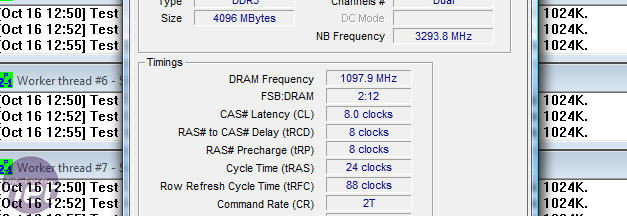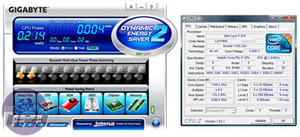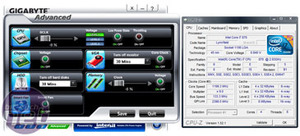Overclocking
It was quite surprising and actually an impressive experience to see the board not only crack a 200MHz Base Clock with th eusual 20x multiplier, but also nudge over to 202MHz while remaining completely stable. We pushed the board to 205MHz, but it wouldn't complete a few benchmarks, even despite additional VTT voltage, so we dropped the Base Clock back until everything was happy.There's very little actual difference between 202MHz and the 200MHz on the Asus P7P55 Deluxe board however - both managed to set the memory at a 10x multiplier too, so the memory of both boards ran at around 2GHz, with CL8 timings. Voltage settings were 1.425V core voltage, 1.42V VTT, 1.9V PLL, 1.68V DDR3 and 1.15V P55.
We dropped in a Core i5-750 to check if the 21x Turbo Boost (rev 2) multiplier could be accessed permanently, and unfortunately it cannot. The CPU could still run at the 200MHz base clock on a 20x multiplier to yield 4GHz - certainly a sufficient overclock for most - but we know Lynnfield CPUs are good for a little more on air, and without the 21x multiplier the board is therefore the limiting factor.
Memory overclocking was also a little disappointing, as the board could only manage a maximum of 2,196MHz at 1.8V with 2,200MHz G.Skill Perfect Storm memory. However, the board was happy enough to run the memory at its rated CL8 timings. Dropping the timings to CL9 did not give us any extra frequency.
Finally, we tested the maxmimum Base Clock achievable by dropping the CPU multiplier and increasing the VTT and Base Clock. Increasing the VTT voltage to 1.49V, with a core voltage reduced to 1.40V (since the total CPU frequency was only ~3.5GHz) we managed 210MHz stable. However, using even a 212MHz Base Clock would see the system not even POST.
One feature we really liked from the board design was that when the CMOS is reset, before the first POST is complete, the board automatically asks which BIOS profile you want to load (assuming some have been saved): the last know good setting or default values. This is great for getting straight back to the point where we were previously with fewer clicks.
Power Consumption
Gigabyte has revamped its Dynamic Energy Saver software to version two, with a redesigned look and additional optional screen for other hardware selections. Gigabyte has been exceptionally quiet about this, and it's understandable why: some elements look very similar to Asus' EPU software. That's not a bad thing mind you, because the EPU software is far more user friendly and intuitive now, even if we still have no clue which of Level 1, 2, or 3 is better.
Gigabyte's power consumption appears exceptionally good at idle, but remember that there's physically less board to power than the full ATX boards from Asus and MSI. Even then, the Gigabyte has a clear 10+W power saving. When loaded, the Gigabyte board doesn't match the MSI, falling 6W shy with DES-2 on and 9W short with the software off.
It's good to see that Gigabyte's software is actually of benefit, but however expansive the options may appear, none of the options actually does anything. You may think you're saving more power by clicking the buttons and enabling more stuff, but our power meter showed no difference no matter how many (or how few) options were enabled, either when the CPU was idling or under load.

MSI MPG Velox 100R Chassis Review
October 14 2021 | 15:04













Want to comment? Please log in.